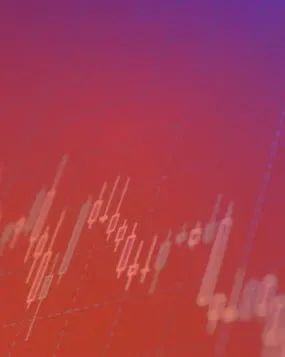- What is Ethereum?
- How to trade Ethereum
- Buying vs trading Ethereum
- Is Ethereum risky?
- Factors impacting Ethereum
- Cryptocurrency forking policy
What is Ethereum?
The Ethereum project is an effort to democratise the internet by creating a ‘world computer’. It seeks to replace the old model of servers or clouds hosting data with a new approach – ‘nodes’ provided by volunteers. The creators of Ethereum are seeking to introduce an alternative model for data and apps that is not dependent on big technology companies.
Ether, the currency that powers Ethereum, is used to pay for the transactions that occur on the Ethereum network. Its primary purpose is to reward the miners who are processing the data transactions on the Ethereum network.
Most people not actively involved with the Ethereum network refer to Ether as Ethereum. Ether was issued as part of the crowd funding campaign that launched Ethereum but millions of new coins are created every year.
How to trade Ethereum
To trade Ethereum, you don’t need to be working on the Ethereum network. It is possible to trade the price of this crypto using CFDs, for example.
Ethereum has a real-world value in currency, which will go up and down over time. This is the amount of another currency one Ether can be exchanged for.
Go long or short: take advantage of both the rises and the falls in the Ethereum price
Volatility: react more quickly to changes in price without owning Ethereum
Leverage: trade Ethereum with only a small initial investment
Ethereum can be traded around the clock, as it does not depend on a particular market being open.
Be aware, however, that using leverage to trade Ethereum means you will be more exposed to changes in the price. Make sure that you keep stop losses in place to protect yourself against sudden price reversals and you are aware of what your total exposure to the Ethereum price is.
Interested in Ethereum trading? Get started today by opening a CFD account with City Index.
Buying vs trading Ethereum
Buying Ethereum requires the use of specialist cryptocurrency platforms. This can be both a cumbersome and time-consuming practice and will make it difficult to react to short-term changes in price.
Trading Ethereum using a CFD allows you to react quickly to price changes and take advantage of short-term volatility. You don’t need to own Ethereum to be able to trade its price.
Is Ethereum risky?
Ethereum is a volatile market and although this presents opportunities for traders, it can also represent risks. Both buying and trading Ethereum involves risk.
- Ethereum has high volatility and sharp price fluctuations are highly likely
- Leveraged trading can magnify both your profits and losses
If you have further questions about trading Ethereum, please see our crypto FAQs
Factors impacting Ethereum
There is technically an unlimited supply of Ethereum. While 60 million Ethereum ‘coins’ were issued as part of the Ethereum crowd funding campaign in 2014, approximately 18 million new coins are mined every year.
As with other cryptocurrencies, it is important to understand that the ‘rules’ affecting the way Ethereum is mined and processed can be changed suddenly, and this can have a big impact on the price, for better or for worse.
For example, the Ethereum price may potentially be impacted by its proposed 2022 change to a ‘proof of stake’ (PoS) model from a ‘proof of work’ (PoW) model, which means that users will only be able to validate transactions according to the number of coins they hold, rather than through mining and their computer processing power. Some believe the effect of a PoS shift will be a greener and faster network that bolsters the legitimacy of ETH, although any predictions on how the event will impact price would be speculative at this stage.
Similarly, demand may be affected in the event of the introduction of sharding, which spreads out the computational workload across a peer-to-peer network, upgrading data capacity and making the network faster and more scalable.
Cryptocurrency forking policy
In the event that the current cryptocurrency splits into two, new cryptocurrencies are created, this is known as a hard fork. We will generally follow the cryptocurrency that has the majority consensus of cryptocurrency users and will therefore use this as the basis for our prices. In addition, we will also consider the approach adopted by the exchanges we deal with, which will help determine the action we take.
We reserve the right to determine which cryptocurrency unit has the majority consensus behind it.
As the hard fork results in a second cryptocurrency, we reserve the right to create an equivalent position on client accounts to reflect this. However, this action is taken at our absolute discretion, and we have no obligation to do so.
If the second cryptocurrency is tradeable on major exchanges, which may or may not include the exchanges we deal with, we may choose to represent that value, but have no obligation to do so. We may do this by making the product available to close based on the valuation, or by booking a cash adjustment on client accounts.
If, within a reasonable timeframe, the second cryptocurrency does not become tradeable, then we may void positions that had previously been created at no value on client accounts.
Over periods of substantial price volatility around fork events, we may take any action we consider necessary in accordance with our terms and conditions, including suspending trading throughout if we deem not to have reliable prices from the underlying market.








